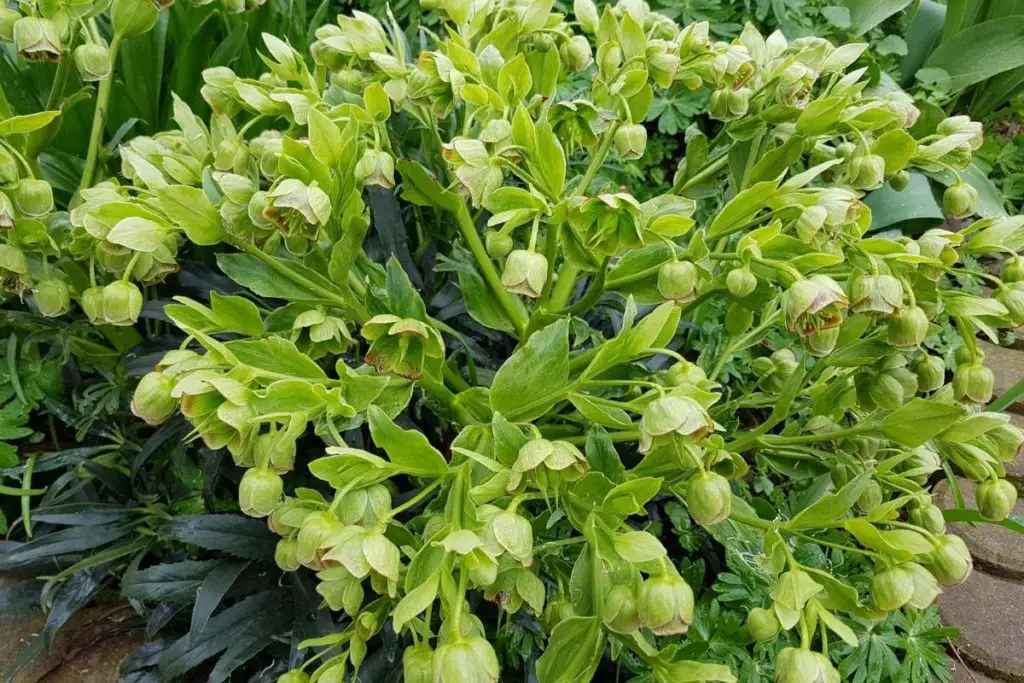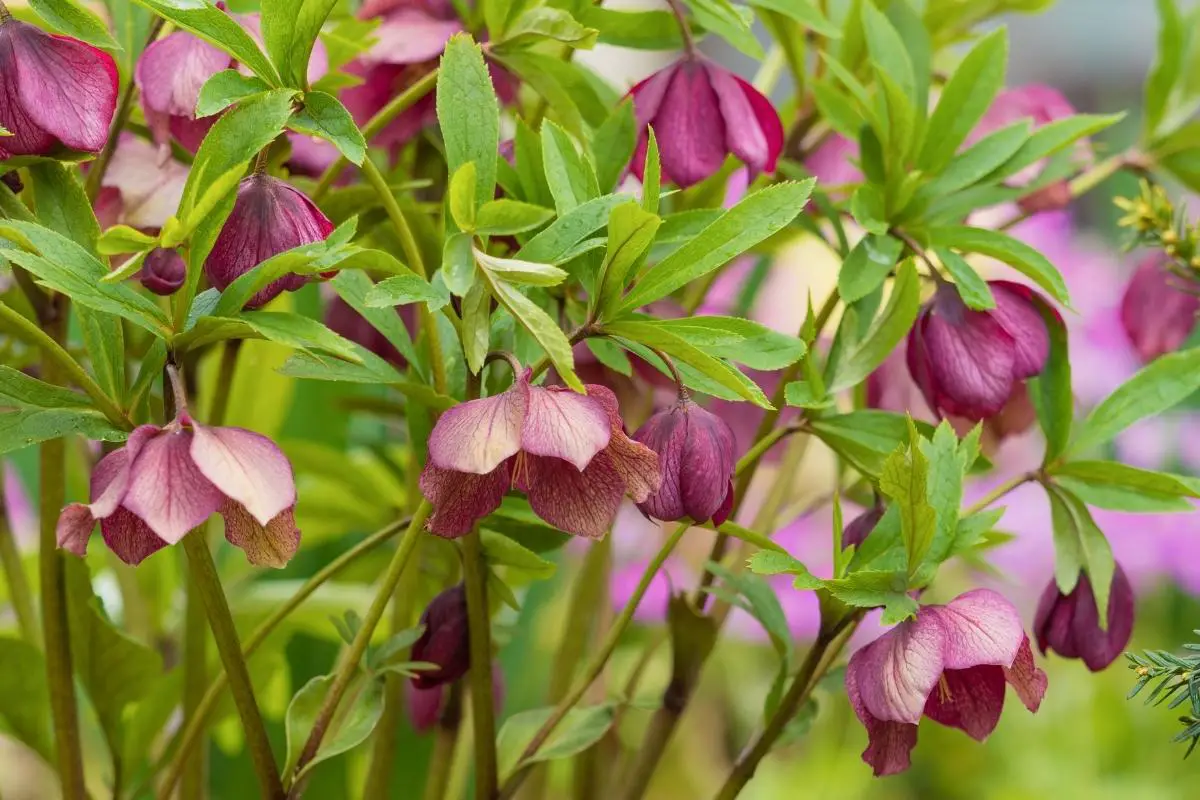Many plants are susceptible to flopping or drooping in certain situations. It turns out that hellebores are no exception to that rule. We are going to take a closer look at some of the most common reasons that your hellebores may be flopping.
In addition, you might learn new ways on how to prevent your hellebores from flopping in the future. No one likes a droopy plant!
Table of Contents
Why Are my Hellebore Drooping?
Hellebores can flop over when a few different circumstances occur. The most common occurrence takes place when the hellebore is too dry and isn’t receiving enough water. This can be cured with natural or manual watering on a weekly basis.
Dry conditions for long periods of time will ultimately lock in the fact that your hellebores will flop at some point and look far less charming than their full potential. Even though dryness is the main reason that your hellebores may be flopping over, there may be other causes too.
We are going to explore some of the additional contributing factors that may be causing your hellebores to appear as if they’re drooping or flopping over. There is no doubt that the average temperature in the local climate can have a significant impact on the appearance of your hellebore perennial plant.

Why Do Plants Suffer From Drooping & Flopping?
As you have already learned, dryness and lack of watering of the hellebore plant are the two most common contributing factors toward hellebores flopping over and suffering in appearance.
These factors are not exclusive though, because the local climate can also contribute. The temperature in the local region has a tremendous impact on hellebore plants.
In an ideal situation, you would want to have your hellebores exposed to Fahrenheit temperatures in the 60s and 70s. Once you reach the 80-degree range, your hellebores could start drying out much quicker, and more natural or manual watering will be required to prevent dryness.
Even though hellebores are capable of self-sustaining and tolerating various drought conditions, a side effect of flopping could develop if conditions continue to deteriorate during the drought.
If you found this article interesting, check out Gerbera Daisy: Annual or Perennial
What is ‘Flopping’ for Hellebores?
Lighting conditions can sometimes play a part in the way a plant thrives over time. Some hellebores and other various types of plants that don’t receive the appropriate amount of sunlight can suffer from flopping because they grow too quickly without enough sunlight to support the growth.
The side effects after this takes place can vary, but commonly results in a plant that flops over. This is only one of the reasons that it is always important to ensure that your plants receive a sufficient amount of sunlight every day, especially early on in their growth.
If lighting conditions are not currently sufficient for your hellebores, you should try to see if there’s anything you can do to remove nearby plants or objects that are preventing the sun’s light from reaching your plant.
While the amount of sunlight can cause your hellebores to flop over, we’re also going to explore some of the ways that soil can cause ‘flopping’ as well.
For more tips on Hellebore Sun or Shade click here.
Can Soil Quality Cause ‘Flopping’ in Hellebore plants?
There’s definitely an impact towards flopping plants from soil conditions that might not be ideal. For example, some soils are not integrated with the necessary nutritional elements that can help your plant thrive and grow. When this is the case, your plant may experience flopping much more easily, even without any other contributing factors.
Once you start throwing in poor soil quality and a potential lack of watering, the likelihood of having your hellebore plant flop over is much higher. Weak hellebore plants will flop over while the plants that received the appropriate soil conditions, sunlight, and water will stand the test of time and have virtually no chance of flopping over.
The soils that don’t have enough nutritional elements are bad for most plants, including hellebores. It can also be dangerous to have overly-rich soil conditions. Plants like hellebores can flop over with rich soil conditions in some circumstances.
For best results and growth, try to ensure that you have well-drained soil and a very good location for your planted hellebores. Some plants, such as hellebore will flop or doop in the snow or rain because the roots will draw in the moisture they need as a survival mechanism. Source.
Are Hellebores More Likely To ‘Flop Over’ Than Other Plants?
A well-balanced regimen is required for any plant to grow, and this obviously includes hellebore plants. Hellebores are not necessarily more likely to ‘flop over’ than other plants, but they do need a lot of attention to prevent them from flopping over when they continue to grow.
It can be stressful and cause you a lot of headaches to balance the amount of sunlight, pick the right location, and ensure the soil is appropriate. Nobody wants droopy or floppy hellebore plants as they continue to grow, so well-balanced hellebore, in well-drained soil will likely not experience any of these challenges if maintained properly.
Related Questions?
The best way to prevent a plant from flopping or drooping is to properly care for it during its growth phases. This means that you should pick the right location for sunlight, soil, and temperature. In addition, you should make sure that you don’t over-water your hellebore plants during this crucial period of time.
Inadequate water maintenance and dryness are two major contributing factors. Any other factor that prevents your hellebore plant from growing to become strong is obviously going to also play a role in your hellebores being more likely to ‘flop’. This could be anything from soil quality to the local climate.
No, hellebores does not need to be staked. These plants are extremely resilient after they have been established. As long as the proper care went into their early growth, they should be able to grow with no assistance other than water.

